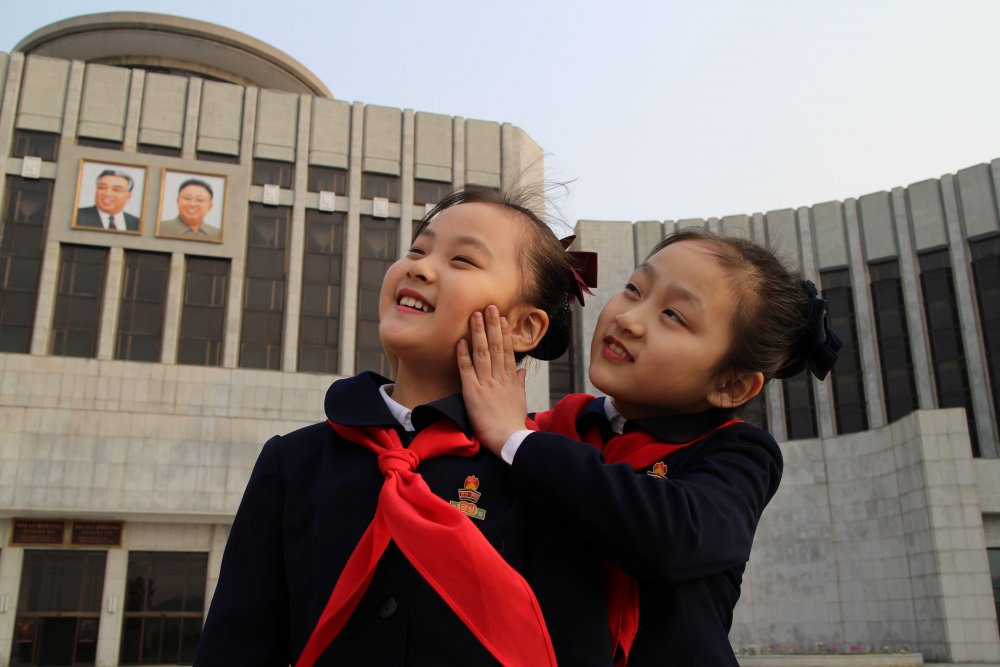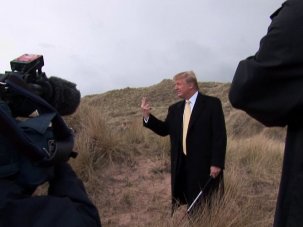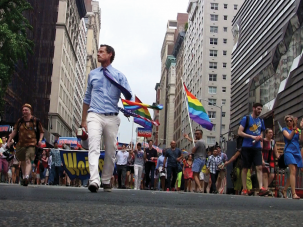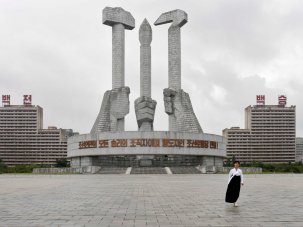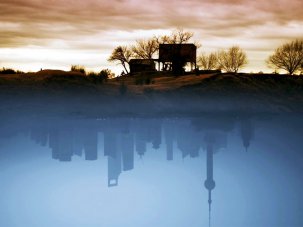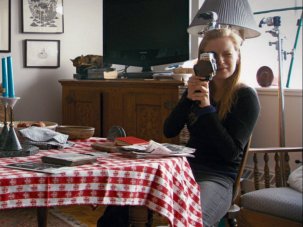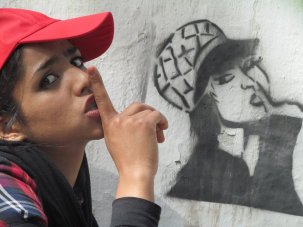We live in an era of great phoniness in our culture and politics, so it makes sense that many viewers look to documentaries for authenticity. From Donald Trump and Nigel Farage to the nearly 100 million selfies taken around the world each day, our ordinary experience is littered with blunt, alienating performances that send us searching for something genuine.
Under the Sun is now on limited release in both the UK and the US.
Cameraperson is on limited release in the US. See camerapersonfilm.com.
Documentaries, though, are of course highly constructed things, forged in the tense space between the chaotic real and the fictionalising, necessarily manipulative process of movie-making. We documentarians may capture and display moments that ‘feel real’, but they only appear that way because we put them in context, via framing and through editing. We coax a sense of authenticity, at best, yet the ‘authentic’ is often a main selling point for our work. If we had more advanced conversations about the contradictions in the form, we’d have smarter, more engaged viewers – but we documentary filmmakers might lose our main marketing trick.
These complexities are often a great source of anxiety for we filmmakers. For example, Penny Lane, director of the tricky, animated huckster documentary Nuts!, has just taken the unprecedented step of publishing ‘footnotes’ to her film, noting in her new Filmmaker Magazine column: “I thought if I could provide my viewers with footnotes, maybe I could make interesting headway in a significant ethical debate around truth and manipulation in documentary.” The relative authenticity of documentary has been a favourite bit of shoptalk since the beginning of cinema (and these sometimes-heated discussions continue today), but so much of the handwringing comes from a basic unease by both viewers and makers about how the sausage actually gets made. ‘Movies’ means manipulation, plain and simple, and the best we can do is offer transparency and use this inescapable truth to our formal or narrative advantage, as the most intriguing films often do.
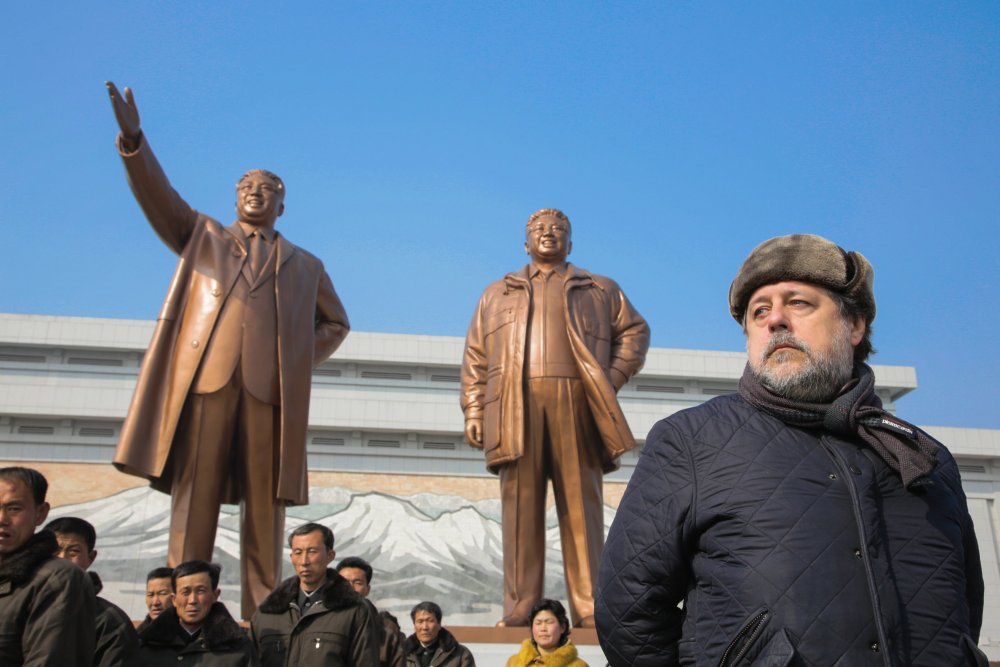
Vitaly Mansky in Pyongyang
Meanwhile, the most overly fetishised word in all of documentary might be ‘access’. Sure, making a credible film almost always involves convincing a subject to allow you into whatever important room the story demands, but too many of today’s documentarians forget that opening a door does not a movie make. Josh Kriegman and Elyse Steinberg’s Weiner, for example, finds hilarity and cringe-y thrills with their too-good-to-be-true access to preternaturally scandalous former U.S. Congressman and New York mayoral candidate Anthony Weiner, but to what end? Weiner is certainly a character of Shakespearean proportions, but the film ultimately fumbles what could be a deliciously relevant tale of modern politics, often playing as little more than snappily edited campaign recordings taken during a ludicrously bad time. The Tribeca Film Festival-premiering All This Panic, about a group of teenage girls in New York and the True/False-premiering The Pearl, about four transgender women, are two other recent, decent documentaries that had incredible characters, but too often felt like cinematically limited exercises in access-getting.
It’s certainly reasonable that we’d cling to the perhaps idealistic notion of ‘authenticity’ and the methodological necessity of ‘access’, but too often the former becomes a red herring and the latter an excuse for paint-by-numbers filmmaking. Two new nonfiction films that push considerably past these documentary orthodoxies, however, are Vitaly Mansky’s Under the Sun and Kirsten Johnson’s Cameraperson. The former is an initially startling, ultimately affecting stunt biography of the hagiographers of North Korea; the latter a memoir of a life in cinema by way of re-purposed footage. Both films encourage viewers to read through their images, opening up opportunities to fathom the documentary space as shifting, negotiable and always partly fabricated. The flux of nonfiction – that quivering tension between the random thing happening in real time and space and our attempt to make images of it – is an intrinsic part of the form. Documentary images are manufactured by imperfect humans, contacts are always provisional, rooms are tentatively, nervously walked into, the record button is pressed when we least expect. Reveling in these aspects of the process allows for more layered, and ultimately more profound, cinematic experiences.
Under the Sun trailer
In Under the Sun, Mansky makes the fictionalising nature of images his initial set up. After having reportedly spent years negotiating access to North Korea’s propagandists with terms that included the state’s right to delete any unwanted material, Mansky betrayed his unwitting collaborators by recording extra footage on secret camera cards and using that smuggled material to make his film. ‘Official access’ thus becomes the first move of a revelatory if somewhat cruel game of hidden agendas, as Mansky turns his sometimes meticulous, often hapless handlers into unsuspecting subjects, which then makes clear the unnerving pathologies at the heart of the North Korean’s desire for image control.
But this is all backstory and Mansky doesn’t make his methods so obvious to the viewer. An early text card announces:
The script of this film was assigned to us by the North Korean side. They also kindly provided us with an (sic) round-the-clock escort service, chose our filming locations and looked over all the footage we shot to make sure that we did not make any mistakes in showing the life of a perfectly ordinary family in the best country in the world…
Thus, despite the knowing phrasing and the cheeky star symbol that accompanies the text, the notion that what’s being shown is ‘approved’ is knit into the film’s fabric. The long observational passage that follows, of the handpicked social-realist heroine traveling to school and listening to a lecture about her brave North Korean leaders, therefore plays like an autobiography written by a deluded ideologue. The ‘authenticity’ being presented is sanctioned and sanitised, of course, exposing not only the almost sociopathic propaganda machine dutifully at work (the repetition of state mythologies numbs the senses) but also revealing, in subtle ways, the very limits of documentary validity. Had we not been clued into the ironies of manipulation, this crucial classroom scene might play as straight reportage; the megalomaniacal autobiography might be mistaken as forthright. By using ‘access’ as a plot point, the film shows the layers of untruth built into the image-collecting process, and revels in the irresolvable contradictions.
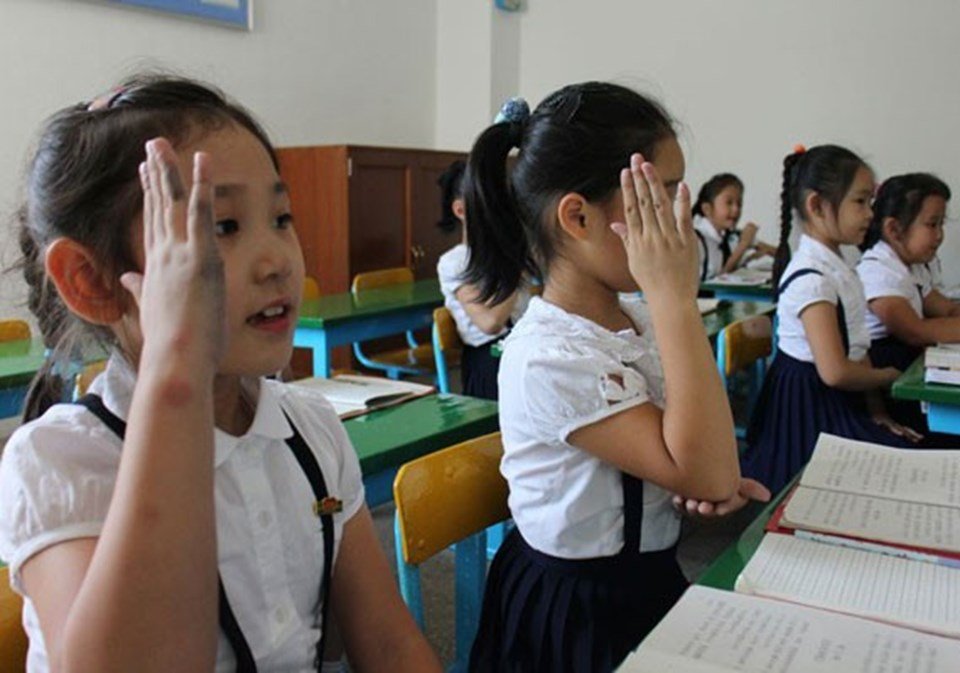
Under the Sun (2015)
As this extraordinary classroom sequence develops, lingering close ups begin to reveal glimmers of humanity behind the forced façade, and this is where Mansky’s film becomes most affecting. Our heroine wrinkles her nose just a bit, another kid yawns. The camera can lie, the ‘authentic’ can be an agreed-upon ruse, but if you watch long enough, the masks might slip and uncontrollable feelings might emerge.
The rest of Under the Sun moves through scripted story set-ups, sometimes showing the state handlers directing scenes outright, sometimes allowing us to read past and between the staged moments ourselves. The film is elegiac where another revealing portrait of North Korea, Mads Brügger’s The Red Chapel (2006), is comically absurd. What could be an easy critique – the North Koreans obsessively try to control their image! – slowly morphs into something sadder and more unsettling. The film gazes on the bullshit surfaces long enough to show real human behaviour within an intensely dehumanising system. By dwelling on both the façade and its cracks, and not just settling for a more conventional, you-are-there genuineness, the film asks us to think through its images and thus evokes a deeper sense of empathy.
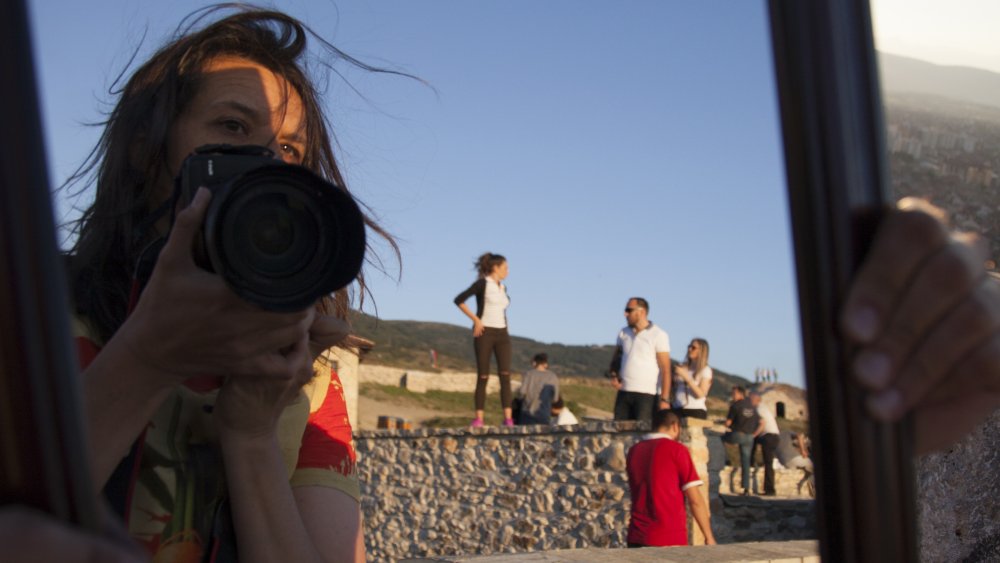
Cameraperson (2016)
Kirsten Johnson’s Cameraperson concerns itself with the often idealistic, always knotty human desire to connect through documentary images. Johnson, in close collaboration with editor Nels Bangerter, goes through a catalogue of unused material from her long career as a cinematographer to make a kind of self-portrait through scraps, a diary by way of other filmmakers’ unwanted bits.
Because the film uniquely positions scenes as ‘raw moments’ – which include constant flashes of subtle manipulation and decision-making by Johnson behind the camera – it becomes a meditation on the provisional, fallible nature of documentary filmmaking itself, quietly shattering conventional illusions about the process and the relationship between images and reality. ‘Access’ isn’t simply getting permission to nobly tell someone else’s story, it’s standing in a hallway, nervous and unsure if you should be filming a baby fighting for its life. ‘Authenticity’ isn’t magically achieved, it’s simultaneously negotiated and stumbled upon, constructed and found. Sometimes you rip a weed out of the ground to make a shot better, sometimes you bump your head while filming in the New Yorker offices, sometimes your camera subtly instigates a mental breakdown. Documentary is what you get while figuring out these human predicaments.
Cameraperson trailer
No film in recent memory has more thoroughly explored Viktor Kossakovsky’s maxim that “Documentary is the only art, where every aesthetical element almost always has ethical aspects and every ethical aspect can be used aesthetically.” This isn’t Stories We Tell, but it could be called Moments We Make. Many of the moments Johnson chooses to show us – the ones she says in an opening on-screen text “have marked me and leave me wondering still” – are scenes of tragedy and suffering, but because the camera-wielding, often chattering Johnson is always the de facto main character, the misery is contextualised as being recorded rather than simply happening in front of us. This, of course, is the nature of movies, but filmmakers often do everything they can (by trying to edit out the cameraperson-as-character) to imbue their images with immediate, unfiltered power of reality itself. Here the human holding the recording device is allowing us to glimpse her thinking as she negotiates the relationships with other humans to produce her images. We feel the quiver in her hand as she holds her camera, we think about why she might pan over to her subject’s face, we hear her breath being taken away.
Thus, what we call the ‘authentic’ is shown to be a complex dance of tiny human dilemmas, playing out between subject, camera and cameraperson. In one scene, which takes place in the Bosnian countryside, a young boy plays with an axe as Johnson (who we’ve been shown is a mother of young children) wonders when and if she should put the camera down to stop the boy from hurting himself, and we’re left to wonder whether her own (our own?) cultural biases about safety and parental responsibility are colouring our reaction, and the tentativeness is present in the barely perceptible tremble of the camera and the moment is nerve-wrackingly human, and the quandary is relatively minor and the answer is unclear. Here and elsewhere in the film, profound empathy is manufactured by witnessing Johnson trying to find her shots and trying to decide when not to shoot. Scenes of pain and sadness are exhilaratingly edited next to scenes of exuberance. Life is recorded, until the cameraperson steps away, then life just happens. The cameraperson can’t capture it all.

Where Is the Friend’s Home? (Khane-ye doust kodjast, 1987)
The way in which both Under the Sun and Cameraperson use self-aware techniques to conjure deeper considerations of human experience remind me of the work of Abbas Kiarostami, who passed away in July. Kiarostami was a master of making films that used their meta conceits as staging grounds for intensely philosophical reflections. His movies were tricky constructions that somewhat paradoxically educed something like pure feeling. The end of Taste of Cherry isn’t a simple curtain pull, it’s a stark digital-video poem on the finality of death. The slipperiness of Close-up or the movie-within-movie-within movie progression of the Koker Trilogy tease more than just our brains. These films are self-interrogating concoctions that bristle with existential yearning; Kiarostami used the materiality of cinema to evoke a sense of the spiritual.
The hybrid-fictional mode he often worked in and the cultural specificity of making films in Iran may complicate direct comparisons on our questions of ‘authenticity’ and ‘access’, but Kiarostami’s films nonetheless offer great lessons for modern documentarians. Dwell on the surface of the thing to glimpse the unseeable, show your hand while conjuring a more meaningful magic trick. Chuck out the predictable ideas of direct actuality and conventional notions of subject-filmmaker interaction and make nonfiction images that create spaces for viewers to contemplate the metaphysical or the unknowable.
Under the Sun and Camperaperson, in very different ways, echo the work of the late Kiarostami and give hope that his influence will continue to help us find vital nonfiction cinema, and that these conversations about ‘truth’ can indeed move forward.
In the September 2016 issue of Sight & Sound
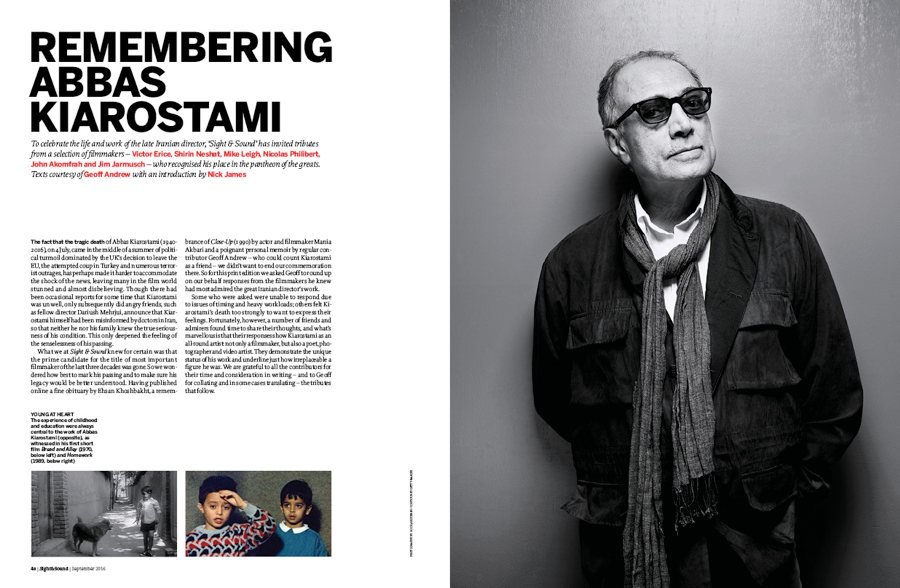
Remembering Abbas Kiarostami
To celebrate the life and work of the late Iranian director, Sight & Sound has invited tributes from a selection of filmmakers – Víctor Erice, Shirin Neshat, Mike Leigh, Nicolas Philibert, John Akomfrah and Jim Jarmusch – who recognised his place in the pantheon of the greats. Texts courtesy of Geoff Andrew with an introduction by Nick James.
-
The Digital Edition and Archive quick link
Log in here to your digital edition and archive subscription, take a look at the packages on offer and buy a subscription.




